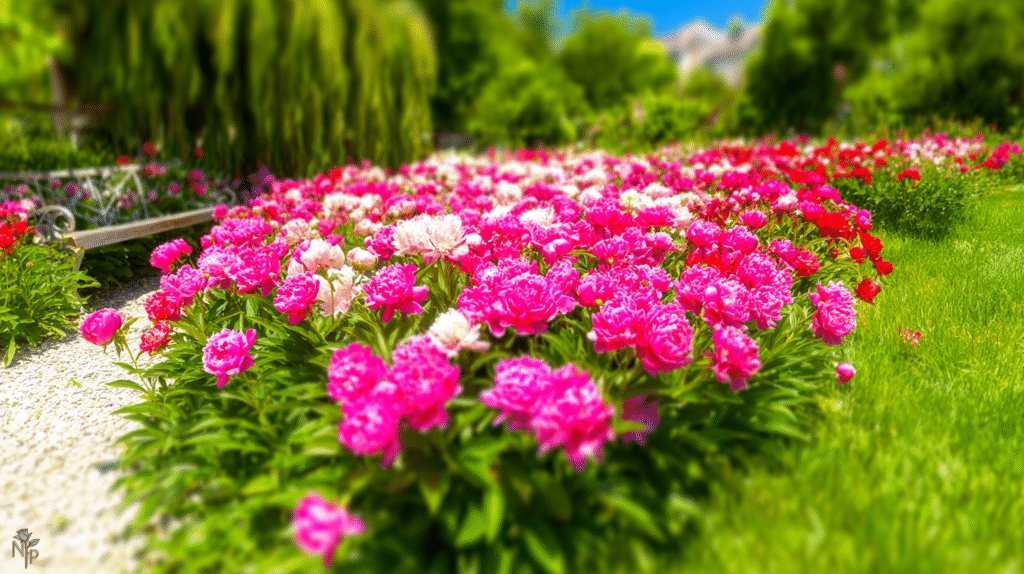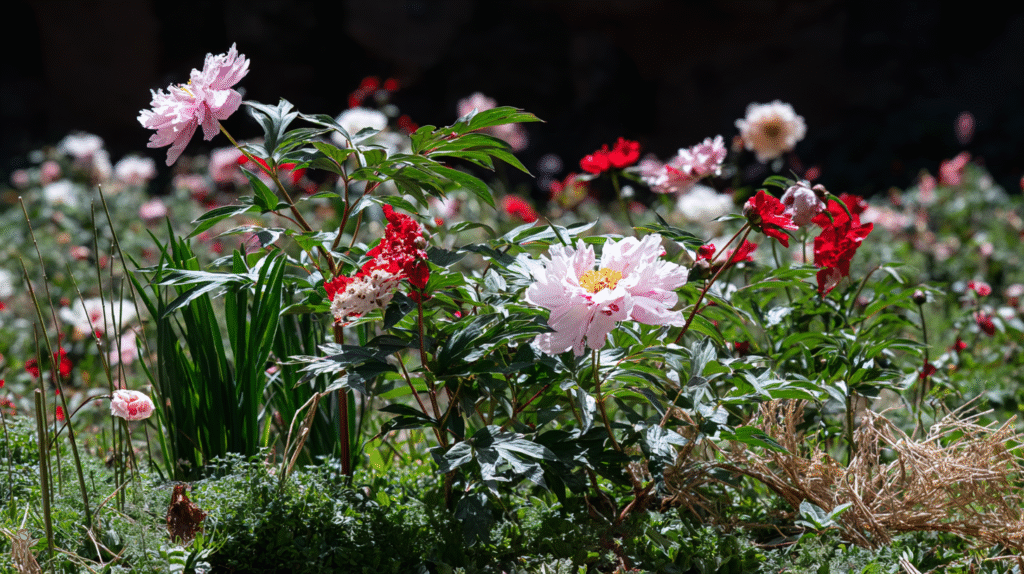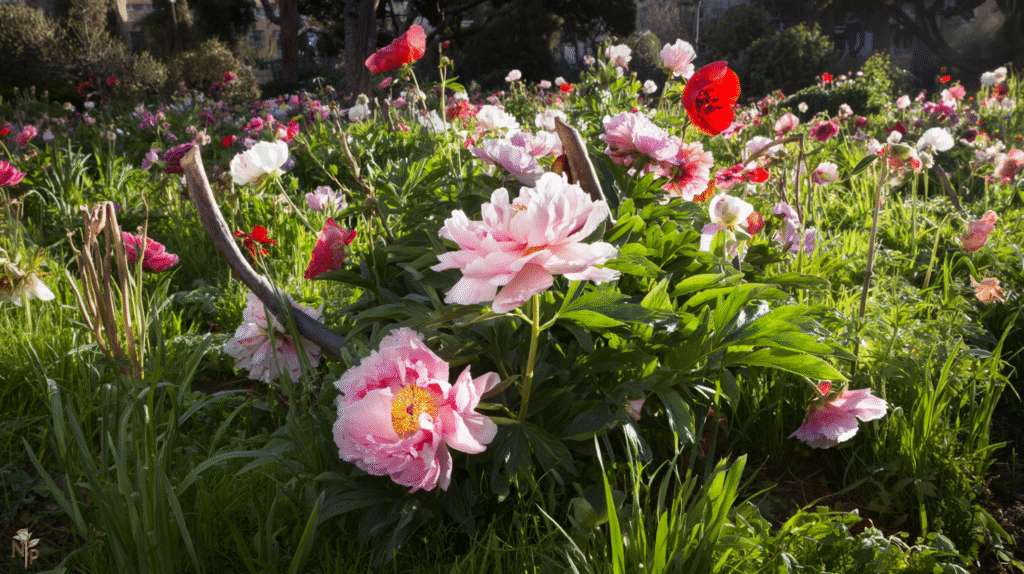My grandmother grew peonies that were older than me. Massive, fragrant blooms every May, zero effort on her part. So naturally, when I bought my first house, I figured peonies would be easy. Plant them, ignore them, enjoy flowers for decades, right?
Wrong. So, so wrong.
Year one: No flowers. Year two: Three pathetic blooms that looked nothing like grandma’s. Year three: The whole plant just… died. Turned out I’d made literally every possible peony mistake, some I didn’t even know were mistakes until I killed my second plant. And my third.
Now, seven years and approximately $200 worth of dead peonies later, I finally have five thriving plants that actually bloom. Like, magazine-worthy blooms that make the neighbors stop and ask questions. Turns out grandma’s “zero effort” peonies were successful because someone (probably my grandfather) did everything right from the start, then left them alone.
Here’s every mistake I made, plus some I’ve watched other people make, and exactly how to fix them. Because peonies should outlive you, not die before their first birthday.
Mistake #1: Planting Them Too Deep (The Silent Killer)
This one killed my first two peonies, and I didn’t even know it was the problem until a master gardener literally dug up my third one to show me.
Here’s the thing nobody explains properly: those little pink buds (called “eyes”) on the roots need to be exactly 1-2 inches below soil. Not 3 inches. Definitely not 6 inches like I was doing. TWO INCHES MAX.
I was burying them like they owed me money, thinking deeper meant more protected from winter. Nope. Plant them too deep and they’ll grow leaves forever but never bloom. Or, if you’re extra unlucky like me, they’ll just rot.
How to check if yours are too deep: Carefully dig around your peony in early spring until you find the eyes. If they’re more than 2 inches down, you need to raise the whole plant. I know that sounds terrifying, but I’ve done it successfully (after killing a few first).
The fix: September is your best bet for transplanting. Dig up the entire root ball, add soil to the hole to raise it, replant at the right depth. Mark it with a stick so you remember where those eyes are. Yes, it might sulk and not bloom next year. Still better than never blooming at all.

Mistake #2: The Fertilizer Fiasco
Year three, determined to get blooms, I went fertilizer crazy. If the bag said one scoop, I used three. My logic? More food = more flowers.
What actually happened? Gorgeous, lush green foliage. Absolutely zero flowers. Plus some kind of fungus that made the leaves look like someone splattered them with brown paint.
Turns out peonies are like that friend who gets drunk on half a beer. They need barely any fertilizer, and too much nitrogen (the first number on fertilizer bags) makes them produce leaves instead of flowers.
What actually works: Once a year, in early spring when shoots are about 3 inches tall, I sprinkle a handful of 5-10-10 fertilizer around each plant. That’s it. Some years I forget and they still bloom fine. My neighbor uses only compost and her peonies are spectacular.
If you’ve been over-fertilizing, just stop. Skip fertilizer entirely for a year. They’ll sort themselves out.
Mistake #3: Wrong Sun, Wrong Spot, Wrong Everything
My first peony was in what I thought was “partial shade.” It got maybe two hours of direct sun. The plant survived but literally never bloomed. Not once in three years.
Peonies need at least 6 hours of direct sun. Not filtered sun. Not “bright shade.” Actual sunshine hitting those leaves for 6+ hours. My current peonies get sun from 10 AM to sunset and they bloom like crazy.
But here’s the weird part: Too much afternoon sun in super hot climates can fry them. My friend in Arizona learned this when her peonies basically melted in 115-degree heat. If you’re in the desert, they need afternoon shade. Everyone else? Full sun, baby.
The spacing disaster: I also planted my first ones way too close together and near a huge oak tree. Peonies need air circulation or they get every fungus known to mankind. Plus that oak was stealing all the water and nutrients. Now mine are 3 feet apart minimum, away from tree roots, where air can actually move around them.
Mistake #4: The Water Wars
I thought peonies were like roses – thirsty all the time. So I watered them. A lot. Daily in summer because I’m an overachiever.
Yeah, they rotted. Turns out established peonies are surprisingly drought-tolerant. They need water, sure, but they HATE wet feet more than cats hate baths.
What I do now: Spring when they’re actively growing: water deeply once a week if it hasn’t rained Summer after blooming: barely any water unless we’re in serious drought Fall: let rain handle it Winter: ignore completely
New plants need more water their first year, but even then, I learned to check the soil first. Stick your finger in three inches. Still moist? Don’t water. I killed more peonies with kindness (water) than neglect.
Mistake #5: Ants Are NOT the Enemy
I spent my entire first season frantically spraying ants off my peony buds, convinced they were eating them. My neighbor probably thought I’d lost my mind, out there with the hose every morning, muttering at ants.
Plot twist: ants are actually helping. They’re eating the nectar on the buds, which helps them open. The ants aren’t hurting anything. Some people think ants are necessary for peonies to bloom (they’re not), but they’re definitely not harmful.
Now I leave the ants alone. They do their thing, flowers bloom perfectly, everyone’s happy. Well, except when they find their way into my kitchen, but that’s a different problem.

Mistake #6: Cutting Them Down Too Early
End of summer, peonies look rough. Brown spots, yellowing leaves, generally sad. My first year, I cut everything to the ground in August because it was “ugly.”
Big mistake. Huge.
Those ugly leaves are still photosynthesizing, sending energy to the roots for next year’s blooms. Cut them too early and you’re basically stealing your plant’s lunch money.
The right way: Wait until the first hard frost kills the foliage naturally, then cut stems to 2-3 inches above ground. In my zone (5b), that’s usually late October. Yes, they look bad for two months. I plant some annuals around them to distract from the ugliness.
Mistake #7: The Mulch Mountain
I love mulch. Keeps weeds down, looks tidy, retains moisture. So naturally, I buried my peonies in 4 inches of mulch.
Remember that whole “eyes need to be shallow” thing? Yeah, mulch counts as coverage. My beautifully mulched peonies never bloomed because I’d essentially planted them too deep with mulch.
What works: In spring, pull mulch away from the crown entirely. I create a little mulch volcano around them but leave the center bare. In winter, I lightly cover them with 2 inches of mulch for insulation, then remove it in early spring. Pain in the butt? Yes. Worth it for blooms? Absolutely.
Mistake #8: Expecting Instant Gratification
Bought a peony in May, planted it, waited for flowers. Nothing. Figured it was defective, almost dug it up.
Thank god I didn’t. Peonies are the introverts of the flower world – they need time to settle in before they perform. The saying “first year sleeps, second year creeps, third year leaps” is absolutely true.
My current star performer did nothing year one, had three blooms year two, and this year (year five) had forty-seven flowers. I counted because I’m weird like that.
The patience plan: Year 1: Expect nothing. Be thrilled if leaves grow. Year 2: Maybe a few blooms. Don’t cut them all, let the plant keep some energy. Year 3: Starting to show potential. Year 4+: Now we’re talking.
If it’s been 4+ years with no blooms and you’ve fixed all the other issues, then maybe consider that the plant is a dud. But not before.

The Success Story
After all these disasters, my current peony setup is thriving. Five plants, all different varieties, blooming in sequence from early May through mid-June. The neighbors literally come over just to smell them.
Here’s what finally worked:
- Planted at the right depth (marked with stakes so I remember)
- Full sun location, away from trees
- Minimal fertilizer, maximum patience
- Water only when needed
- Leave the ants alone
- Cut back only after frost
- Light winter mulch, removed in spring
The biggest lesson? Peonies aren’t hard to grow. They’re hard to grow if you do too much. Every person I know who’s failed with peonies (including me) was trying too hard. The people with 50-year-old plants? They basically ignore them except for basic maintenance.
My grandmother was right all along. Her peonies thrived because someone (definitely my grandfather) planted them correctly forty years ago, then everyone left them alone. Now mine are on their way to outliving me too, assuming I can keep myself from “helping” them to death.






